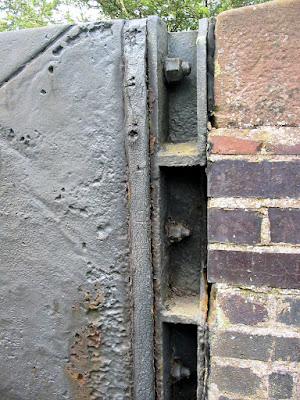About a year ago, in my efforts to widen my waterways-related library, I purchased the
Historic Thames by Hilaire Belloc on
eBay.
Other than knowing that Belloc wrote some witty verse and that he had a "literary" reputation I knew nothing of the author.
Historic Thames was first published around 1907 and my copy has a dedication for June 1921. However, I presume it to be a first edition because there are no reprint dates and the publisher is JM Dent who I beleive first published it.
At 199 pages it is not a long read but when you begin the book you are soon struck by one feature that at first can appear alarming - it has no chapters! It is a genuine continuous narrative from beginning to end. This can be disconcerting but you soon get used to it. However, you soon also realise that Belloc has an almost unique take on the history of the Thames.
Belloc is particularly strong on the role that the Thames has taken in the government of England and the role the monasteries played in the history of the river and southern England in general. He is also keen on making economic comparisons through the ages using the costs of various commodities to help his arguments.
Belloc points out the role played by the religious communities at Abingdon, Wallingford, Dorchester, Reading, Windsor, Chertsey, and of course Westminster. You get the strong impression that he considers the period when life revolved around monasteries was a golden age and that after Henry VIII dissolved the monasteries it all went down hill. The book appears to have been well researched but this is the book of a writer not an historian as there are no references. It is clear that he is no fan of
Thomas Cromwell or his descendants (i.e Oliver). Belloc claims that the family were in fact Williams (or ap Williams) from Llanishen, in Glamorgan, and that Thomas Cromwell was definitely "on the make". Perhaps Belloc had a particular distaste for Protestant Welsh. It came as no surprise to me to discover that Belloc, who was born in France, was a staunch catholic. But what was surprising, and got me searching Wikapedia, was his attitude to Jews. In several places in the book he goes out of his way to mention that a certain large country house, that may originally have formed part of monastic land, was now in the hands of Jews, with some of them coming from South Africa. Whilst he makes no direct derogatory comments it is clear that he considers this to be a negative step, although to be fair he does indicate that in the long run this situation may not do significant harm to England. When I looked at the
Wikapedia site on Hilare Belloc it came as no surprise to find that some have accused him of harboring anti-semitic views.
So how is it as a boating book? Well it is far from run of the mill and is certainly not a travelogue. Belloc has a particular view of the history of the Thames that could be considered idiosyncratic, but I certainly know a lot more about the history of monasteries than I did before. And despite its lack of chapters, it is not a difficult book to read. Have a look out on
eBay or
ABE Books for it, you may find it interesting. Copies are not expensive.






















